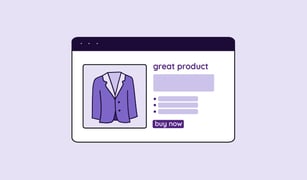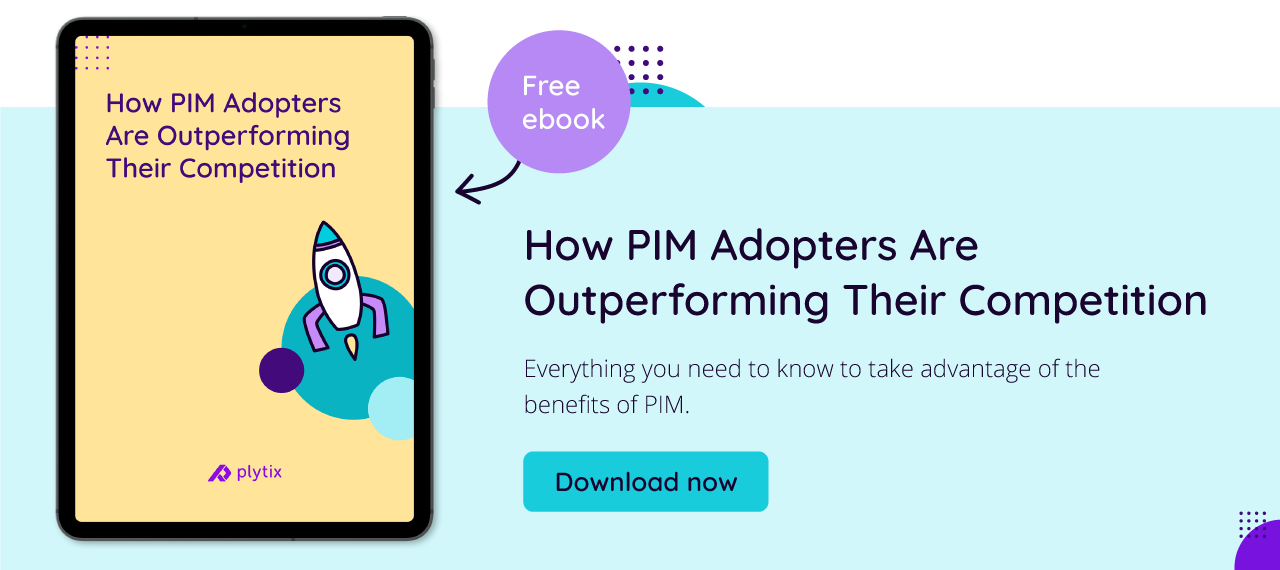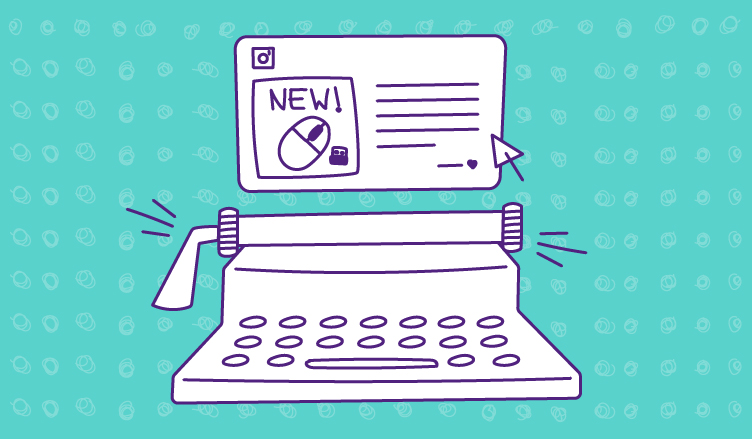When shopping online, how do you know when a product is right for you?
By checking the product details first. You'll want to see if the description, sizes, color options, and price work for you. And, while there are many factors that influence a purchasing decision, if the product doesn't have a description or if the description doesn't say much, you won't feel as confident in purchasing the product.
That's why about 20% of unsuccessful purchases are because retailers had poor product descriptions that didn’t hold relevant information related to the product that customers were looking for. Online customers don't have the luxury to feel and see the product in person. They need accurate (and, better yet, engaging) product descriptions to be certain it's what they want or need. And, you definitely don't want to disappoint your customers with misleading descriptions either.
A strong product description allures, persuades, and educates customers. And, no, you don't need to be a wordsmith to give your customers powerful product descriptions.
You'll want to create product descriptions that:
- Hooks and engages your customer
- Highlights the benefits of your product
- Gives an accurate and detailed portrayal of your product
Let's dive into how you can do this with 5 examples of product descriptions that sell.
1. Understand and learn who your target audience is
What do we mean by this? We mean that you should take the time to learn who your target audience is. These are the customers that your product will best serve. While we'd all love to have everyone buy our product, it's important to be true to your product so that it matches the wants and needs of your actual audience.
Once you've identified who your target audience is, establish what their pains are and how your product can solve those problems. Your product descriptions should reflect this so that you can prove the value of your product.
Let's take a look at Subaru for example.
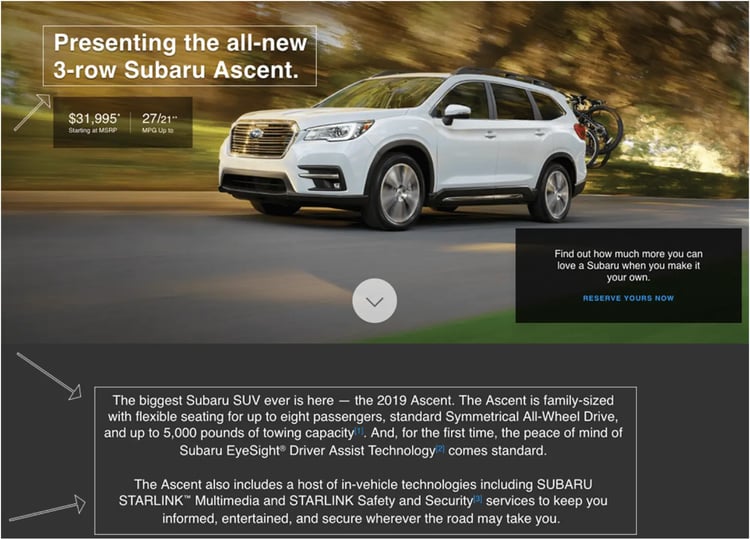
Why is this a good product description?
- They know that their customers want a family car and their product description addresses that pain point by adding keywords like “family-sized”
- They know that some of their customers’ pain points may be how spacious the car is for big families which is why they added “flexible seating for up to eight passengers” in the description.
- They know that safety comes first for their customers which is why they have a paragraph specific to reassure them that this car will take care of them and their families.
Saburu took the time to understand what their customers would look for in a car and made sure they addressed it all so that there wouldn’t be any confusion. Instead of trying to sell this car to everyone, they zoned in on the target audience they are looking for.
2. Engage your readers with tone
When it comes to writing product descriptions, many focus on the basic details of a product. While the basic details are important for buyers to understand the product itself, they should also be engaging and inspiring. When you create engaging and inspiring content, visitors will be more likely to convert into a customer. The description won’t only give them an understanding of your product but helps them get a better feel of the brand as it shows the brand's personality. So, try and make it fun for a customer to read. You can do this by:
- Keeping it short, light, and sweet
- Speaking in a fun and engaging way that connects to a customer
- Implementing the tone of voice customers are most likely to use
Here is an example from Everlane, a fashion and accessories store. Everlane has made it a point to create a warm, inviting, and light tone all over their website.
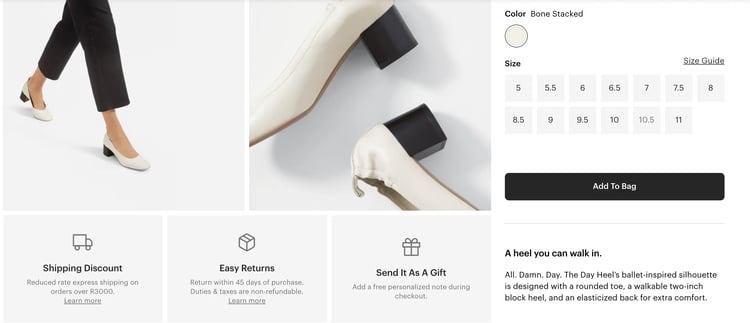
A closer look at the description:
Why is this a good product description?
- They use terms such as “All. Damn. Day." to evoke emotion and make their brand stand out as it comes across as they’re speaking to an old friend.
- Their opening line, “A heel you can walk in,” grabs the customer's attention as it’s a pain point for heel wearers and this Everlane's heel has a solution.
- They use a tone that is relatable, which is what customers love especially online where connections are harder to make.
Pro Tip: While every business can’t be as fun as Everlane, you too can find a way to be engaging in a way that resonates with your audience.
3. Intrigue customers from the start
In a world where people are always in a rush and the average attention span is eight seconds, you want to catch their attention immediately. This means you need to find the perfect combination of a strong hook that makes them want to read more and concise information that gives what they need to know.
Firebox does a great job of creating content that grabs the attention of a customer. They do this by specifying the key features first and then going into creating a story. Their first few sentences are engaging so that customers continue to read.
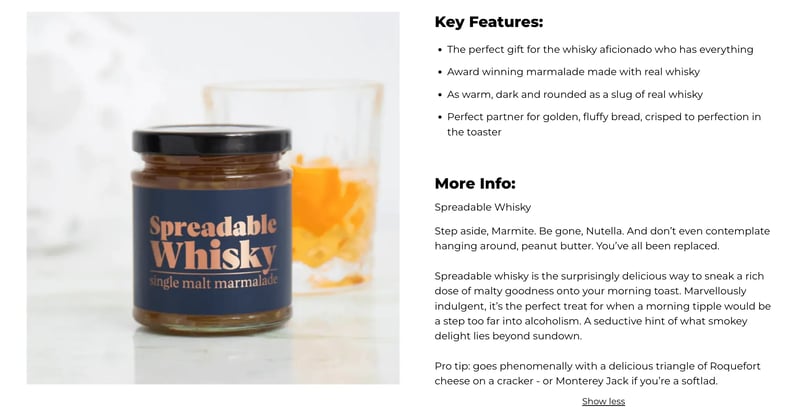
Why is this a good product description?
- Firebox makes use of sentences such as “perfect gift for the whisky aficionado who has everything” making the content relatable because most people have struggled to get someone who seems to have “everything” a gift.
- They are descriptive about their product using words such as “warm, dark, and round” to help customers envision the product.
- They explain what it can be paired with helping the customer further envision how the product will add value.
- They pique your interest with the features even before they get into the product description, but they ensure they never lose your interest. By the time you get to the additional information, you simply want to know more about this product to confirm what the four bullets have told you. To keep you engaged, they use a playful tone with catchy phrases, such as “step aside, Marmite. Be gone, Nutella….”
4. Keep it simple
There's a phrase that says, “too much of a good thing” can end up being bad. Make sure you keep that in mind. When trying to create an alluring product description, you may find yourself going over the top with puns, adjectives, and humor.
But, sometimes, creating perfect product descriptions means ditching all or some of the frills and keeping things simple. This is because you don’t want to forget the basics of educating the customer on your product and how it can improve their lives. Echo Dot does this perfectly, let’s take a look at the example below.
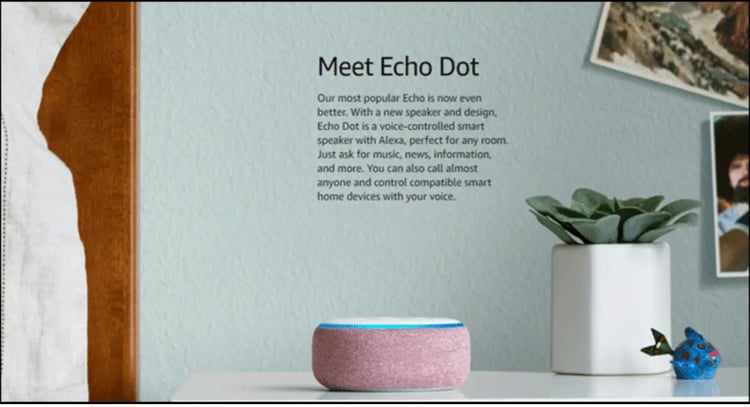
Why is this a good product description?
- Amazon didn’t spend time trying to make their product description funny, sassy, or text-heavy. Instead, they got straight to the point and used strong words.
- They use words like “popular” as a form of social proof, proving to readers that the product is a well-liked option. It also creates FOMO (fear of missing out) and shows customers that the product is in demand.
- They incorporate words such as “even better” which tells a customer that they’d be getting a better version of the in-demand product. This gives customers the feeling of exclusivity.
- They subtly add its features without saying too much or trying to oversell the product such as a “voice-controlled smart speaker with Alexa.”
- The description tells customers that they can use it wherever and for whatever purpose they want, whether it’s to call, listen to music, discover news updates, and more.
5. Help customers envision your product
As an ecommerce business, you don’t have the luxury of walking a customer through your product and wooing them with demonstrations of how it will work. This is where you need to use the power of words to help customers envision themselves using your product. You need to create a story that helps a customer understand why they need it. Take them on a journey of how they will feel once they own the product and how it will better their lives. Kelly Clarkson Home executed this perfectly on Wayfair with their hanging lights.
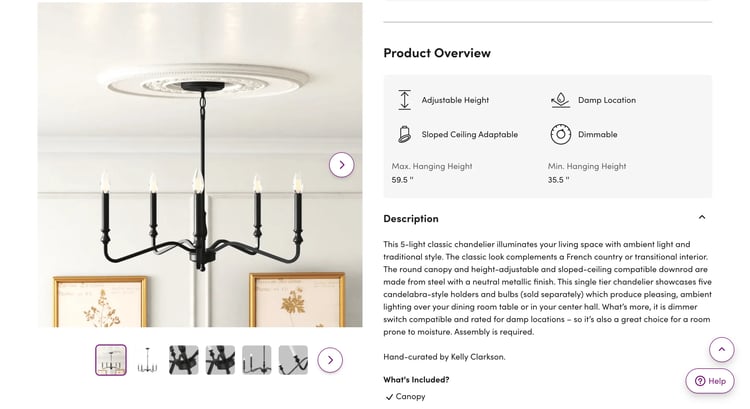
A closer look at the description:
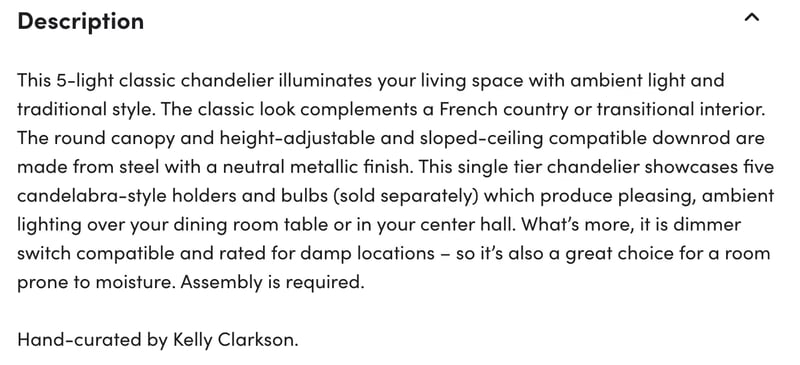
Why is this a good product description?
- They create a picture for customers to envision the product and what it can bring into their space.
- They use descriptive words such as “5-light classic”, “illuminates”, “ambient light”, and “traditional” to help capture the essence of the product.
- They make use of strong storytelling which is a good way to bring life into the images. This further helps customers connect with the product and want it for themselves.
Create killer product descriptions today!
Well, there you have it! These are the five examples to help you create content that inspires, engages, personalizes, and evokes emotions to get customers pulling out their banking details to complete a purchase.
If you need more tips, read our product description checklist to help get you started. And, if you need a place to store all that content, we’ve got you covered too. Plytix is a PIM system that helps businesses store product information such as product descriptions, images, videos, and more in a central location to ensure ecommerce data management is faster and less tedious.
Interested to learn more about our PIM tool? Book a demo or download our eBook on how PIM software has helped businesses succeed online.
Frequently Asked Questions
Writing compelling product descriptions is an art that blends creativity with strategy. Here’s how to create descriptions that resonate with customers and drive sales:
-
Know Your Audience: Understand who your customers are—their interests, needs, and pain points—to tailor your product description to speak directly to them.
-
Highlight Benefits: Clearly articulate how the features of your product improve the customer's life. For every feature, ask "so what?" to find the benefit.
-
Keep It Conversational: Write as if you're speaking to a friend. A relaxed, conversational tone is more engaging and relatable.
-
Inject Humor: Where appropriate, light humor can make your product memorable and enjoyable, encouraging sharing and returning customers.
-
Use Sensory Language: Describe textures, tastes, sounds, visuals, or feelings to bring your product to life and help customers imagine using it.
-
Tell a Story: Create a mini-narrative that paints a picture of the product's journey or the experience it offers, which can forge a personal connection.
-
Incorporate Visuals: Use high-quality images or videos to complement your text, as visuals can often communicate more than words alone.
-
Make It Scannable: Use bullet points, headings, and short paragraphs to make the description easy to read at a glance.
-
Promote Ethical Production: If your products are sustainably made or have ethical guarantees, say so. This can be a key decision-making factor for consumers.
-
Address Common Questions: Preemptively answer frequently asked questions within your product description to alleviate any purchase anxieties.
-
Optimize for Search Engines: Use keywords relevant to your product and audience to help your descriptions rank higher in search results.
-
Test and Learn: Use A/B testing to see which descriptions perform better in terms of conversion rates, time spent on page, and other metrics.
By employing these practices, you can create product descriptions that not only inform but also charm and persuade your customers.

